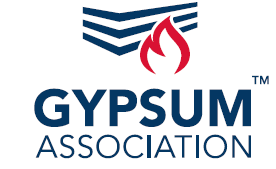As builders and their clients seek increasingly sustainable and healthy homes, a variety of resources have emerged to guide their choices. Products that directly affect building energy and water consumption, such as HVAC systems and appliances, are rated and labeled mainly on performance, which is easy to understand. Building materials, on the other hand, are scrutinized on multiple levels including their potential to off-gas volatile organic chemicals (VOCs) and their level of embodied carbon. Health Product Declarations (HPDs), another example, report chemical ingredients in parts per million. Gypsum Association member companies have long participated in all of these transparency efforts.
Everyone wants to live in a healthy home but it can be difficult for consumers to sort through certifications and healthy home guides to know which products are the safest for their home. This is not merely unfortunate, but potentially dangerous, and the treatment of gypsum board in some guides is a case in point.
Why Gypsum?
Almost everyone has gypsum in their home. More than 90 percent of structures standing today have gypsum board or gypsum plaster walls. Although often overlooked, gypsum panel products, the family of sheet products consisting essentially of gypsum, play a crucial role not just in the appearance of a home but also in how a structure performs under the most extreme and least healthful or sustainable circumstance—fire.
Gypsum is one of the most plentiful minerals on earth but that is not the primary reason gypsum board has been used in construction for so many decades. Gypsum is the material of choice for walls, ceilings and other partitions because of its chemical composition. Calcium Sulfate Dihydrate (CaSO4 · 2H2O), otherwise known as gypsum, is an inert compound containing 21 percent by weight chemically combined water. This characteristic is leveraged to provide buildings, including homes, with passive fire resistance.
When gypsum board is exposed to high temperatures it does not ignite. Instead, the surface literally gives off steam as the chemically combined water in the core is released. Heat transmission is obstructed until this slow process, known as calcination, is complete. During a fire, wood or steel structural members covered with gypsum board are protected because the temperature behind the board is significantly lower than the temperature at which steel loses strength or wood ignites. Even after moisture is unavailable, the calcined gypsum continues to act as a barrier protecting the underlying structural members from direct exposure to flames.
The role gypsum panel products play in passive fire resistance is acknowledged by the building codes, which reference the Gypsum Association’s GA-600 Fire Resistance and Sound Control Design Manual as an appropriate source of code compliant systems for walls and partitions, area separation fire walls, floor-ceiling and roof-ceiling assemblies, among many others. Importantly, each system in the Manual is backed up by rigorous testing for fire and sound in accordance with ASTM and other standards.
Lack of awareness around this key performance characteristic of gypsum panel products—passive fire resistance—has led some proponents of sustainability and healthy living to promote alternatives that would be laughable if their potential use did not blatantly disregard fire safety concerns. One “healthy” home website recently suggested a panel composed of recycled cardboard milk cartons as an alternative to gypsum board. Despite an avowed concern for both human health and the environment no mention was made of fire when promoting this paper-based product as a surrogate for gypsum panel products.
Be wary of self-appointed experts in building materials. Builders know gypsum board provides passive fire resistance and will be wary of proposed substitutions, but they may have to educate their customers. Yes, gypsum board is cost-effective, quickly installed and readily repaired, but those benefits are secondary to fire resistance.
Passive Fire Resistance Plus . . .
Rest assured, gypsum panel products will always provide passive fire resistance and an easily installed and finished surface. What’s more, manufacturers of panel products are consistent innovators and have developed new application-specific solutions that combine fire resistance and increased resilience. The earliest enhanced product offering was 5/8-inch type X gypsum board, which provides “X-tra” fire resistance. More than fifty years later, type X is standard in commercial construction and is consistently used in multifamily and single family residential construction.
Now, a range of products exist offering additional characteristics including mold and moisture resistance, abuse resistance and impact resistance. Similarly, exterior gypsum sheathing, and gypsum shaftliner are alternatives worth considering. Many gypsum panel products are certified for indoor air quality. Not surprisingly, each of these specialized performance products is offered, and frequently specified, with a type X core formulation.
Impartial Information, Objective Advice
The Gypsum Association has been the voice of the industry for almost 90 years and is ready to provide authoritative answers to questions about the specification, handling, storage, installation and finishing of gypsum panel products. Research, testing, and standards development is the core of what we do. Assistance is easily obtained via a phone call to our technical services department or by reference to one of our dozens of technical documents. Questions specific to proprietary gypsum board products should be referred to the respective manufacturer—very likely one of the association’s member companies.
Gypsum panel products are specified as a component of both interior and exterior architectural solutions that contribute lasting value and increased resilience to multifamily and single-family homes. Explore safe, code compliant, performance board options at gypsum.org. Questions can be directed to the GA’s Technical Services Department. We are here to help.



